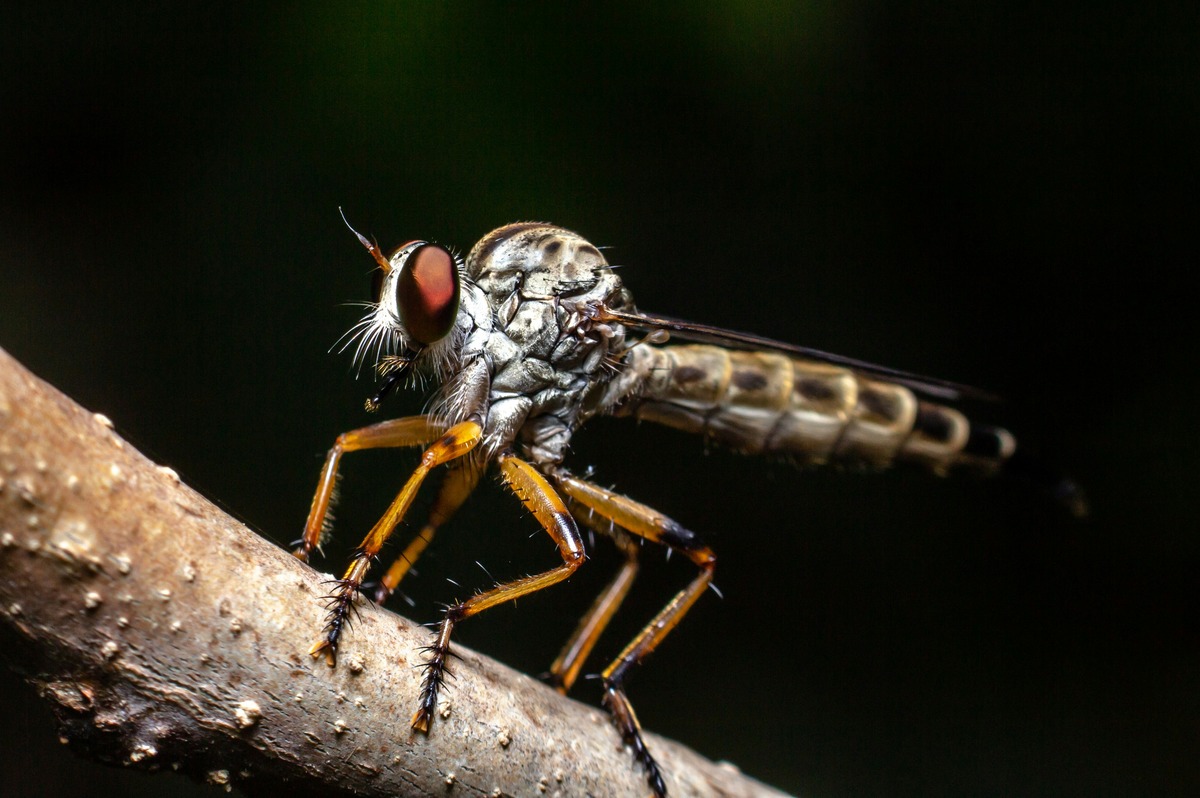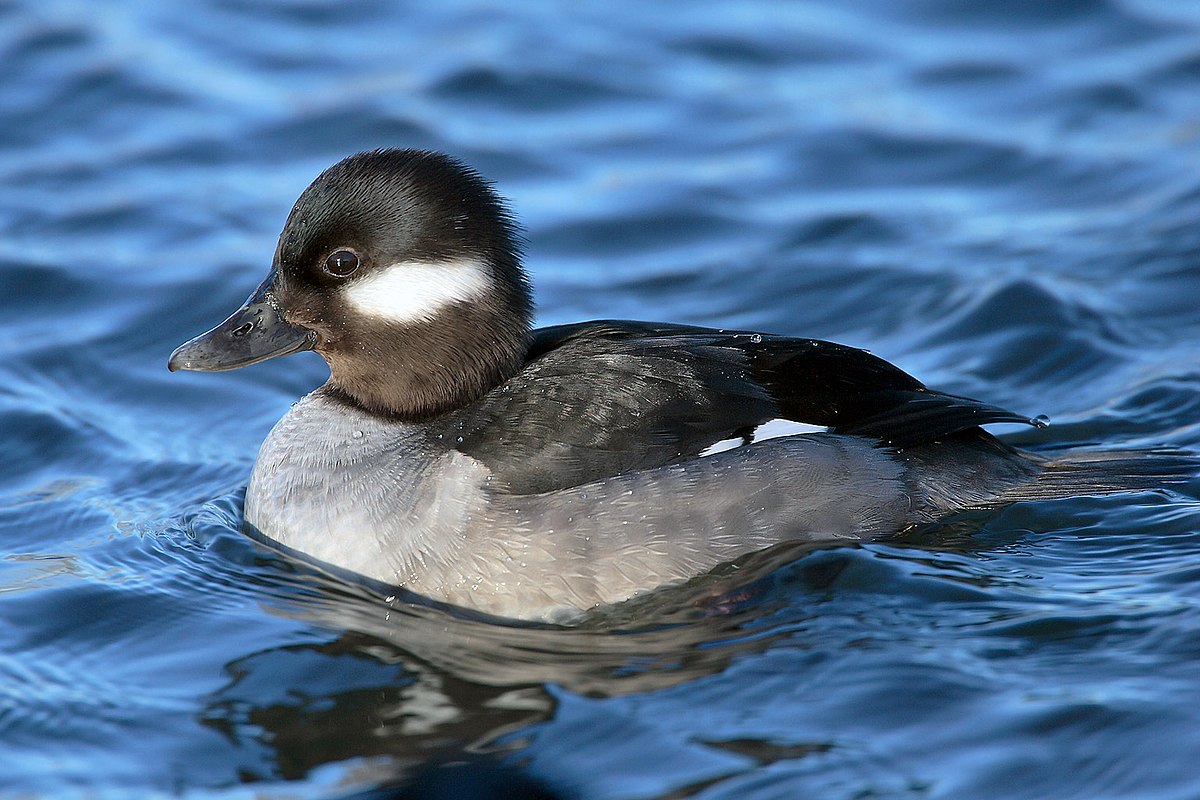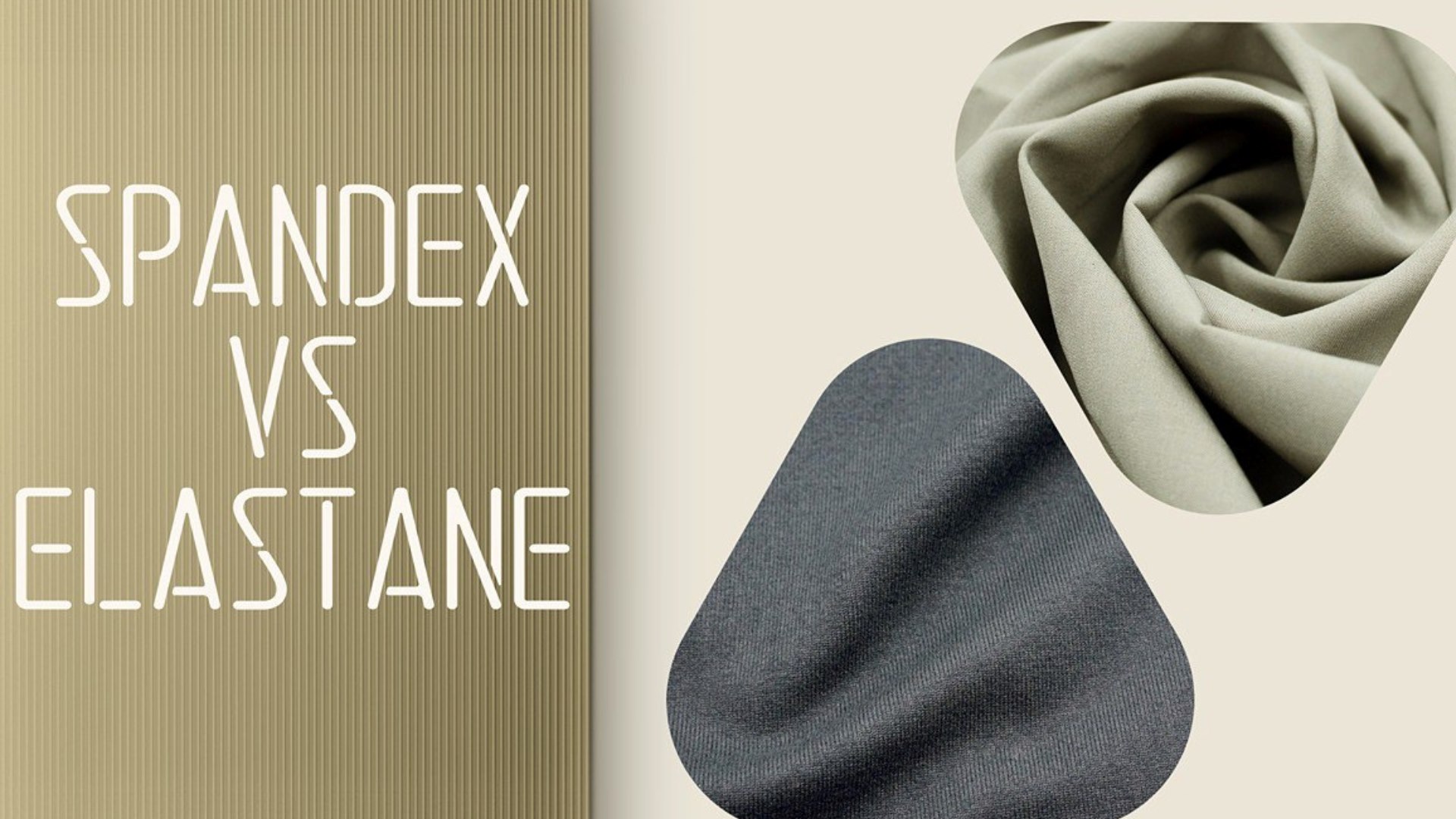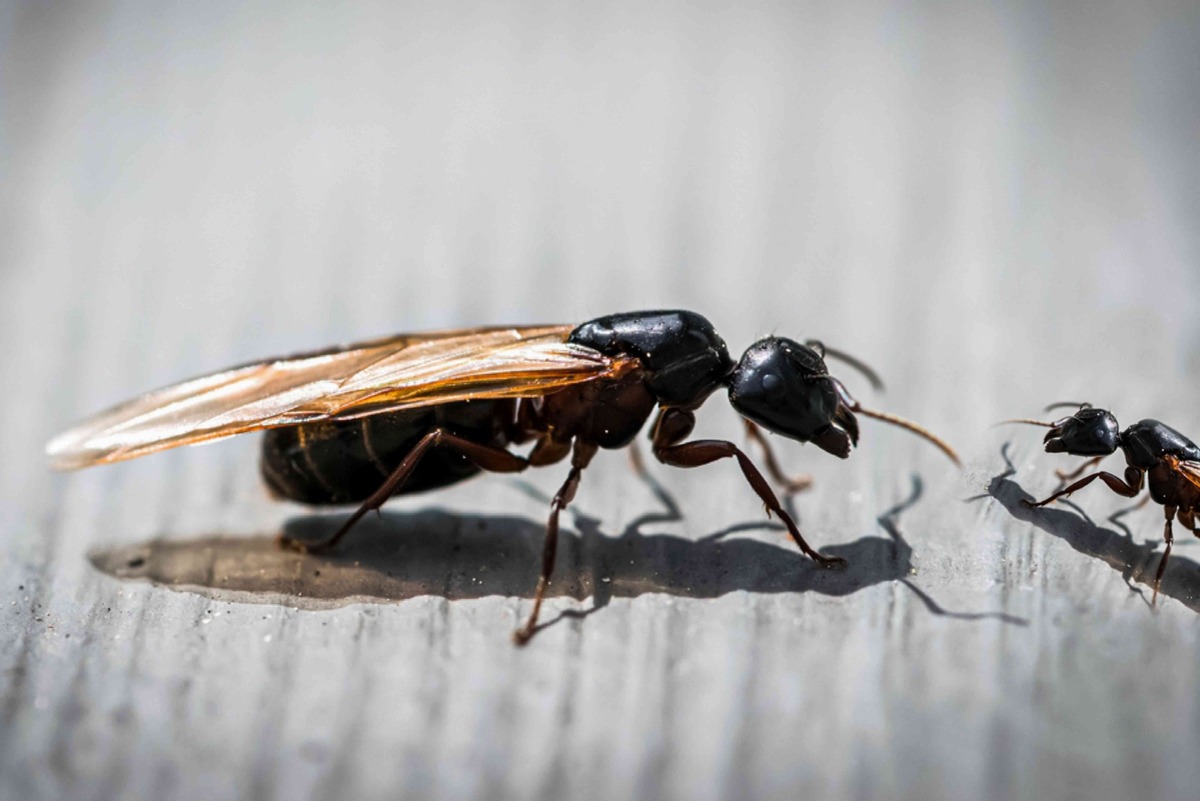Home>Science>Crane Flies Vs. Mosquitoes: Spot The Surprising Differences!


Science
Crane Flies Vs. Mosquitoes: Spot The Surprising Differences!
Published: February 3, 2024
Discover the intriguing contrasts between crane flies and mosquitoes in this engaging science comparison. Explore their surprising differences now!
(Many of the links in this article redirect to a specific reviewed product. Your purchase of these products through affiliate links helps to generate commission for Noodls.com, at no extra cost. Learn more)
Table of Contents
Introduction
Crane flies and mosquitoes are often mistaken for one another due to their similar appearance, but in reality, they are distinct insects with unique characteristics and roles in the ecosystem. While both belong to the order Diptera, they differ significantly in their physical attributes, life cycles, behaviors, and ecological impacts. Understanding these differences is crucial for appreciating the diversity of insect life and recognizing the important roles these creatures play in the natural world.
Crane flies, also known as daddy longlegs, are renowned for their delicate, elongated bodies and slender legs, which contribute to their graceful appearance. In contrast, mosquitoes are recognized for their compact bodies and long, piercing mouthparts, which are used for feeding on the blood of hosts. These physical disparities are just the beginning of the intriguing variations between these two insects.
As we delve deeper into the world of crane flies and mosquitoes, we will uncover their distinct life cycles, shedding light on their developmental stages and the environments they inhabit. Furthermore, we will explore their dietary preferences and behaviors, elucidating how they interact with their surroundings and other organisms. By examining their roles in the ecosystem, we will gain a comprehensive understanding of the contributions these insects make to the natural world.
Through this exploration, we aim to unravel the surprising differences between crane flies and mosquitoes, providing valuable insights into the intricate web of life that surrounds us. Join us on this captivating journey as we unravel the mysteries of these fascinating insects and gain a newfound appreciation for the diversity of life on our planet.
Physical Appearance
Crane flies and mosquitoes exhibit notable differences in their physical appearance, setting them apart in the realm of insects. The most striking dissimilarity lies in their body structure and features:
Crane Flies
- Elongated Bodies: Crane flies are characterized by their slender, elongated bodies, resembling delicate aerial dancers. Their graceful appearance is accentuated by their long legs, which contribute to their ethereal and fragile demeanor.
- Long, Slender Legs: These insects are often referred to as "daddy longlegs" due to their leggy appearance. Their legs can span several inches, adding to their distinctive and elegant silhouette.
- Wingspan: When in flight, crane flies display a graceful and almost ghostly presence, owing to their elongated wings that create a mesmerizing sight as they navigate the air.
Mosquitoes
- Compact Bodies: In contrast to crane flies, mosquitoes possess compact bodies, which are designed for swift and agile movement. Their streamlined physique enables them to maneuver with precision, making them efficient hunters.
- Piercing Mouthparts: One of the most defining features of mosquitoes is their elongated mouthparts, known as proboscis, which are adapted for piercing the skin of hosts to extract blood. This specialized anatomical adaptation sets them apart from crane flies and underscores their role as blood-feeding insects.
- Distinct Wing Structure: Mosquitoes are equipped with wings that allow for rapid and stealthy flight, enabling them to navigate diverse habitats and seek out potential hosts for blood meals.
By examining these distinct physical attributes, it becomes evident that crane flies and mosquitoes possess unique features that cater to their respective lifestyles and ecological roles. These variations in physical appearance contribute to their individual identities within the insect world, highlighting the remarkable diversity that enriches our natural environment.
Life Cycle
Crane flies and mosquitoes undergo distinct life cycles, encompassing various developmental stages that shape their existence and ecological impact.
Crane Flies
-
Egg Stage: The life cycle of crane flies commences with the deposition of eggs in diverse habitats, including moist soil, decaying vegetation, and aquatic environments. These eggs serve as the starting point for the development of crane fly larvae, marking the beginning of their transformative journey.
-
Larval Stage: The larvae, commonly known as leatherjackets, thrive in moist environments, such as soil, where they feed on organic matter and contribute to the decomposition process. This phase is crucial for their growth and development, laying the foundation for their eventual transition into adulthood.
-
Pupal Stage: Following the larval phase, crane flies enter the pupal stage, during which they undergo a remarkable transformation within protective cocoons. This transformative period prepares them for their emergence as delicate and graceful adults, equipped with the ability to navigate the skies and fulfill their ecological roles.
-
Adult Stage: Upon emerging from their pupal casings, crane flies take to the air, showcasing their ethereal flight and graceful presence. As adults, they engage in mating rituals and contribute to pollination, playing a role in the reproductive cycles of various plant species.
Mosquitoes
-
Egg Stage: Mosquitoes lay their eggs in standing water, ranging from ponds and marshes to artificial containers. These aquatic environments provide the necessary conditions for the development of mosquito larvae, setting the stage for their progression through the life cycle.
-
Larval Stage: The larvae, commonly referred to as wrigglers, thrive in water bodies, where they feed on organic matter and microorganisms. This phase is vital for their growth and development, as they undergo molting stages to reach maturity before transitioning to the next stage of their life cycle.
-
Pupal Stage: Mosquito larvae transform into pupae, characterized by their distinct shape and unique behaviors. During this stage, they reside in water, undergoing internal changes that prepare them for their emergence as adult mosquitoes.
-
Adult Stage: Upon completing their development, adult mosquitoes emerge from the water, ready to take flight and seek out hosts for blood meals. This phase marks the commencement of their reproductive activities, as females require blood to nourish their developing eggs, perpetuating the life cycle of mosquitoes.
By comprehensively exploring the life cycles of crane flies and mosquitoes, we gain valuable insights into the intricate processes that shape their existence and contribute to the ecological balance of diverse ecosystems. These life cycles underscore the remarkable adaptability and resilience of these insects, highlighting their essential roles in the natural world.
Diet and Behavior
Crane flies and mosquitoes exhibit distinct dietary preferences and behaviors, reflecting their specialized roles within the ecosystem. These aspects play a pivotal role in shaping their interactions with other organisms and their overall impact on the environment.
Crane Flies
Diet: As larvae, crane flies primarily subsist on decaying organic matter in moist environments such as soil and aquatic habitats. Their feeding activities contribute to the decomposition process, playing a crucial role in nutrient cycling and soil health. As adults, crane flies primarily feed on nectar, participating in pollination and serving as a vital link in the reproductive cycles of numerous plant species.
Behavior: Crane flies are known for their graceful and delicate flight, often observed hovering near vegetation or resting in shaded areas. Their behavior as adults revolves around mating rituals and pollination activities, enhancing the genetic diversity of plant populations and contributing to the overall health of ecosystems.
Mosquitoes
Diet: Female mosquitoes require blood meals to nourish their developing eggs, while male mosquitoes primarily feed on nectar and other plant-based sources. The blood-feeding behavior of female mosquitoes enables them to obtain essential nutrients for egg production, but it also positions them as significant vectors for diseases such as malaria, dengue fever, and Zika virus, posing health risks to humans and other animals.
Behavior: Mosquitoes are adept at seeking out hosts for blood meals, utilizing their keen sensory abilities to detect carbon dioxide, body heat, and other cues. Their behavior as vectors of diseases underscores the critical role they play in disease transmission, highlighting the intricate and often challenging interactions between mosquitoes, humans, and other animals.
By examining the dietary preferences and behaviors of crane flies and mosquitoes, we gain a deeper understanding of their ecological significance and the complex web of interactions that shape their roles in the natural world. These insights underscore the importance of appreciating the diverse contributions of these insects while acknowledging the challenges and opportunities they present within the broader context of ecosystem health and human well-being.
Role in Ecosystem
Crane flies and mosquitoes play pivotal roles in diverse ecosystems, contributing to essential ecological processes and serving as integral components of intricate food webs. Their interactions with other organisms and their influence on ecosystem dynamics underscore their significance in maintaining ecological balance and promoting biodiversity.
Crane Flies
Crane flies, both as larvae and adults, fulfill essential ecological functions that contribute to the overall health of ecosystems. As larvae, they play a crucial role in the decomposition of organic matter in moist environments such as soil and aquatic habitats. By breaking down decaying plant material and contributing to nutrient cycling, crane fly larvae facilitate the recycling of essential nutrients, enriching the soil and supporting the growth of diverse plant species.
Moreover, as adults, crane flies engage in pollination activities, serving as effective pollinators for various plant species. Their delicate flight and foraging behaviors enable them to transfer pollen between flowers, thereby facilitating the reproduction of plants and contributing to the genetic diversity of plant populations. This pollination service is fundamental for the maintenance of plant communities and the sustenance of numerous animal species that rely on these plants for food and habitat.
Mosquitoes
Mosquitoes, particularly female individuals, exert a significant influence on ecosystem dynamics through their role as blood-feeding vectors and their interactions with diverse organisms. While their blood-feeding behavior poses health risks to humans and other animals due to disease transmission, it also serves as a source of sustenance for various predators and organisms within the ecosystem. Mosquitoes contribute to the intricate food webs by serving as a vital food source for predatory insects, birds, and other animals, thereby influencing the population dynamics and behaviors of these organisms.
Additionally, the presence of mosquitoes and their interactions with hosts and predators contribute to the regulation of populations within ecosystems. Their activities as both predators and prey influence the balance of species within diverse habitats, shaping the dynamics of ecological communities and contributing to the resilience and stability of ecosystems.
By fulfilling these diverse ecological roles, crane flies and mosquitoes underscore the intricate interconnectedness of species within ecosystems, highlighting the multifaceted contributions of insects to the functioning and sustainability of natural environments.
This comprehensive understanding of their ecological roles underscores the importance of preserving the diversity of insect life and recognizing the far-reaching impacts of these seemingly small creatures on the broader tapestry of life on our planet.
Impact on Humans
The impact of crane flies and mosquitoes on humans extends beyond their ecological roles, encompassing diverse implications that influence human activities, health, and well-being. While crane flies generally have minimal direct impact on humans, mosquitoes, particularly certain species, significantly affect human populations in various ways.
Crane Flies
Crane flies, also known as daddy longlegs, do not pose direct threats to humans. Their presence is primarily associated with their role as pollinators and contributors to ecosystem health. As adults, crane flies engage in pollination activities, facilitating the reproduction of plant species and supporting the overall biodiversity of natural habitats. Their interactions with plants contribute to the sustenance of diverse animal species, thereby indirectly benefiting human interests in agriculture, horticulture, and ecological conservation.
Mosquitoes
The impact of mosquitoes on humans is multifaceted, encompassing both beneficial and detrimental aspects. While male mosquitoes primarily feed on nectar and do not pose significant risks to humans, female mosquitoes require blood meals for egg development, leading to their role as vectors for various diseases. Mosquito-borne illnesses, such as malaria, dengue fever, Zika virus, and West Nile virus, pose significant health risks to human populations, particularly in regions where these diseases are endemic.
The transmission of these diseases by mosquitoes can lead to widespread health crises, impacting communities, healthcare systems, and economies. In addition to the direct health implications, the presence of mosquitoes can also affect human activities and quality of life, as efforts to control mosquito populations often require significant resources and interventions. Furthermore, the fear of mosquito-borne diseases can influence travel patterns, outdoor activities, and overall well-being, particularly in regions where mosquito-borne illnesses are prevalent.
The impact of mosquitoes on humans underscores the complex interplay between insects and human health, highlighting the need for effective strategies to mitigate disease transmission and promote coexistence with these vital yet challenging organisms.
By examining the impact of crane flies and mosquitoes on humans, we gain valuable insights into the intricate relationships between insects and human societies, emphasizing the importance of understanding and addressing the diverse implications of these insects within the broader context of public health, environmental stewardship, and sustainable coexistence.
Conclusion
In conclusion, the comparison between crane flies and mosquitoes unveils a fascinating tapestry of differences, highlighting the intricate diversity of insect life and its profound impact on ecosystems and human societies. From their physical appearance and life cycles to their ecological roles and implications for humans, these insects embody a rich array of adaptations and behaviors that shape the natural world in profound ways.
Crane flies, with their delicate bodies and graceful flight, contribute to ecosystem health through their roles as pollinators and soil decomposers. Their interactions with plants and other organisms underscore the interconnectedness of species within diverse habitats, emphasizing the essential role they play in supporting biodiversity and ecological balance.
On the other hand, mosquitoes, particularly female individuals, present a complex picture of ecological significance and human health implications. While their blood-feeding behavior poses risks for disease transmission, their interactions with diverse organisms within ecosystems contribute to the regulation of populations and the dynamics of ecological communities. The impact of mosquito-borne illnesses on human populations underscores the critical need for effective disease control measures and public health interventions to mitigate the risks associated with these insects.
The surprising differences between crane flies and mosquitoes serve as a compelling reminder of the intricate web of life that surrounds us, emphasizing the need for a holistic understanding of insect diversity and its implications for ecological sustainability and human well-being. By recognizing the distinct roles these insects play in the natural world, we gain valuable insights into the delicate balance of ecosystems and the interconnectedness of species within diverse habitats.
Ultimately, the comparison between crane flies and mosquitoes offers a glimpse into the captivating world of insects, inspiring a deeper appreciation for the remarkable diversity and complexity of life on our planet. As we navigate the intricate relationships between insects, ecosystems, and human societies, it becomes increasingly clear that these seemingly small creatures wield profound influence, shaping the fabric of life in ways that merit our attention, understanding, and stewardship.












